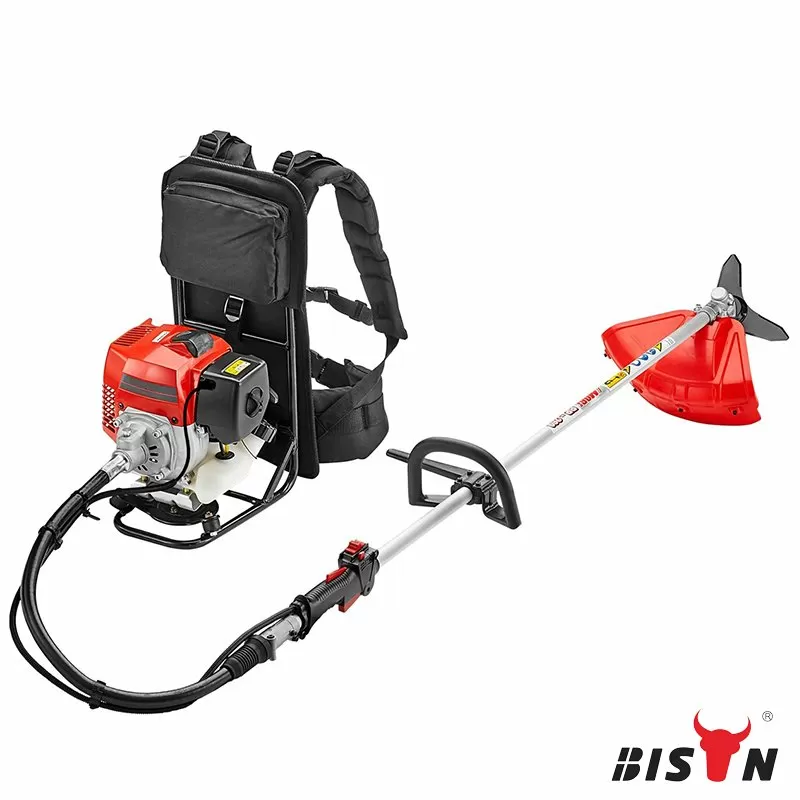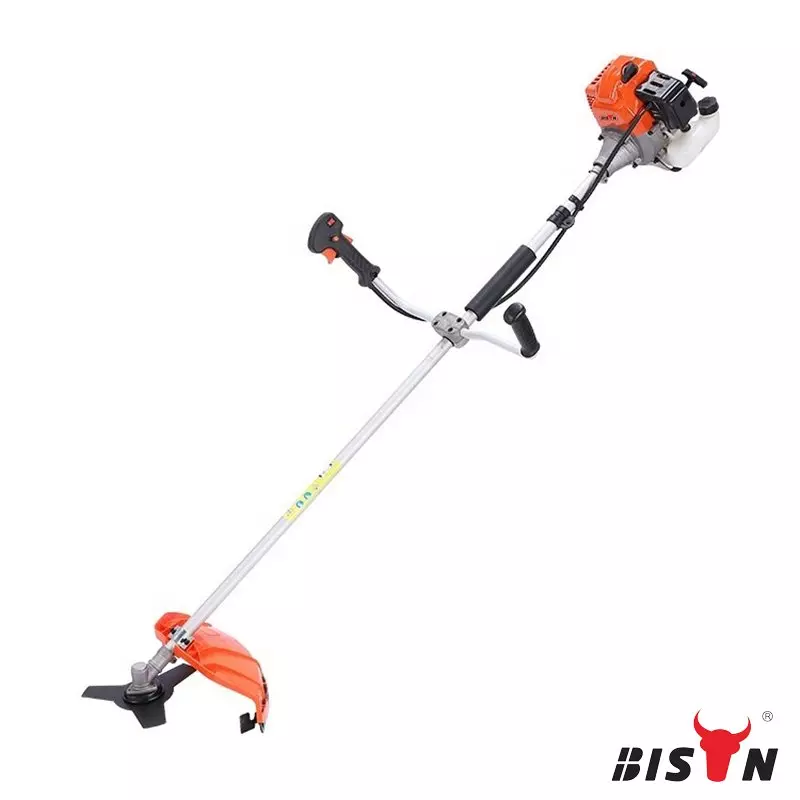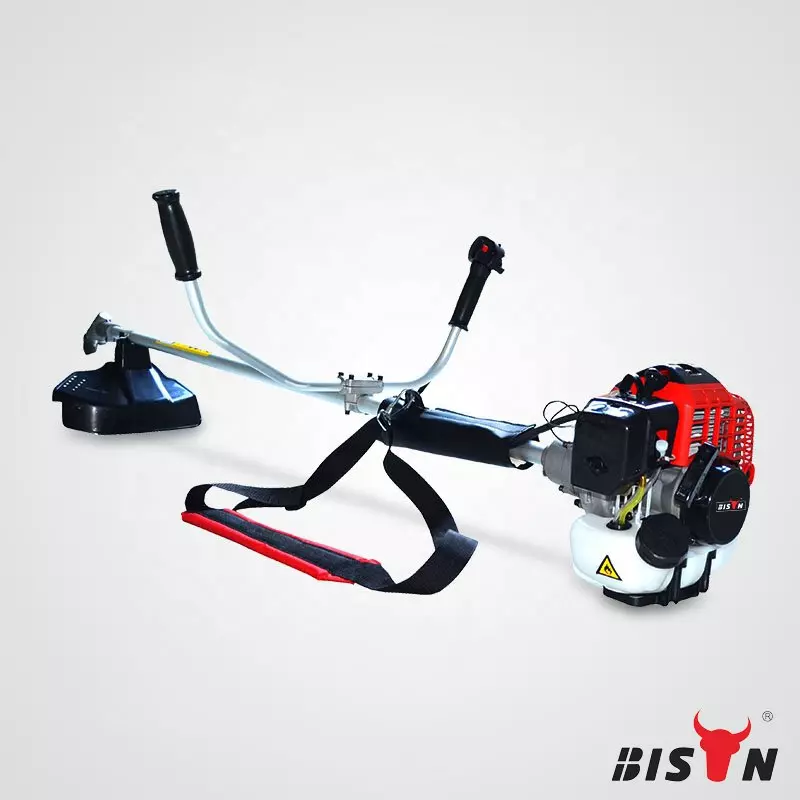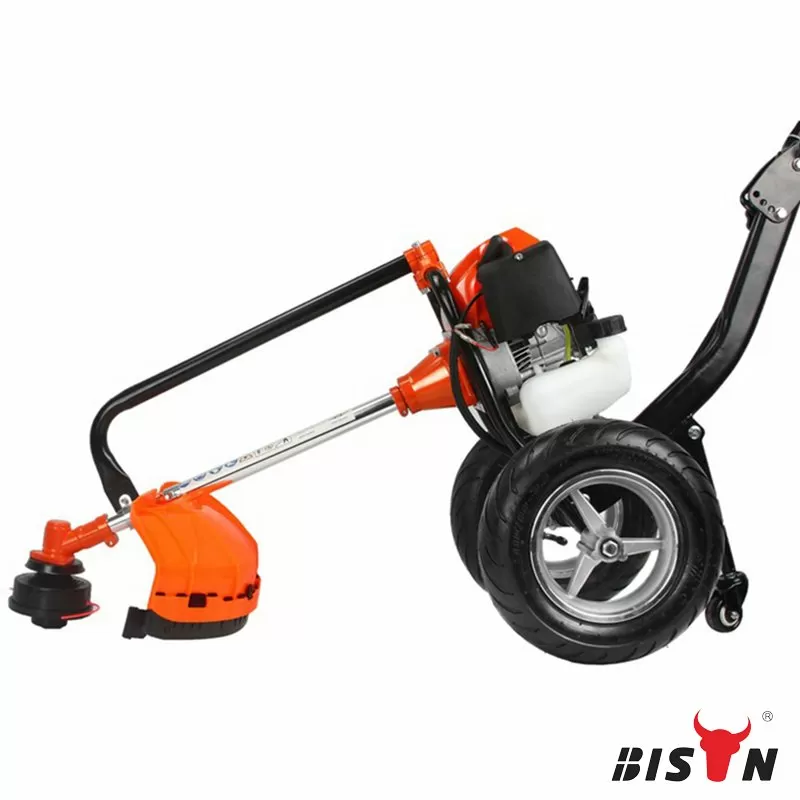Straight shaft vs curved shaft string trimmers
2023-05-15
Table of content

There are many different factors you may consider when wholesaling a string trimmer:
How much power is provided by the motor or engine
how much does the trimmer weigh
how comfortable to hold
how much will it cost
But have you ever asked yourself, "Should I choose a curved shaft trimmer or a straight shaft trimmer?"
If your answer is no, you are not alone. Some string trimmers have a straight shaft, while others have a curved shaft shaped like a hook or the letter J. The choice between straight and curved trimmers can affect the use and performance of your string trimmer, right down to how durable your string trimmer is.
Straight shaft string trimmers
Straight-shaft string trimmers are more common than curved trimmers. One reason for this is the variety of styles available with this trimmer.
Straight shaft trimmer design
Straight shaft trimmer has a bar running straight from the power source to the head. Typically, the straight shaft is longer than the shaft on curved trimmers.
This design allows for more options regarding the type of drive mechanism within the shaft. The drive in the straight shaft can be a plastic or steel cable. Because it doesn't have to bend to fit the curved design, it can also be a solid steel drive shaft—a typical choice for commercial-grade trimmers.
Straight-shaft trimmers have a gearbox that helps convert the rotational force (also called torque) of a motor or engine into the speed of the head.
Advantages and disadvantages of straight shaft string trimmers
Engineers only add design features to machines if those features have some benefit. Each of the above design points brings benefits to the string trimmer user:
Better coverage
More torque
Reduced wear
A longer shaft would make it easier to trim hard-to-reach areas, such as raised decks or spaces below patios. Also, taller people often have an easier time holding them.
Besides, straight-shaft trimmers with solid steel drive shaft has a more durable construction than any trimmer with a plastic drive cable. It can be replaced with heavier-grade replacement strings and an optional cutting blade attachment.
Metal string trimmer blades are designed to be used with straight shaft trimmers. Because of the gearbox inside the straight shaft trimmer, the shaft and trimmer head rotate counterclockwise. You might not realize it by looking at them, but string trimmer blades are designed with counterclockwise rotation in mind.
The straight-line design helps generate more torque, which translates into greater cutting strength with minimal vibration. While straight-shaft trimmers tend to be heavier, and the elongated shape can make them feel unbalanced, their ability to deliver a lot of power and less vibration ultimately makes them more comfortable for some users.
Straight shaft trimmers are designed with more durability, features, and higher power output. Although anyone can use them, many straight-shaft string trimmers are perfect for the long and demanding tasks often faced by commercial users and those who need to tend to large properties.
Curved shaft string trimmers
Straight-shaft trimmers may be more common, but the ergonomics and features of curved-shaft string trimmers appeal to the casual user.
Curved shaft string trimmer design
On most string trimmers, the curve is the hook-like bend in the shaft just above the power head. However, some trimmers have a stem that curves like an elongated letter S. In both cases, the shaft is usually shorter than a straight shaft.
Inside the shaft is a drive cable that connects directly to the power source and trimmer head without a gearbox. The drive cable is made of flexible plastic to accommodate the shaft's bending. Some drive cables may be braided to make them more robust.
Advantages and disadvantages of curved shaft string trimmers
The curved shaft represents an innovation in the field of string trimmers, which brings benefits:
Better control
More convenient to carry
Not that expensive
Because the power head on the crankshaft trimmer points downward even when the user holds the trimmer straight out in front, it is easier to see and maneuver objects such as trees and flower beds in the yard. The trimmer head can be brought even closer to the ground, and the curves give the user more leverage and a better sense of balance.
The improved feel of control also comes from the weight of the crank trimmer. A shorter shaft is a lighter shaft with less burden to carry. The downside to this lightweight construction is that the curved trimmer is limited to light-duty or low-gauge replacement lines, but this should be fine for most homeowners and casual users.
Other potential disadvantages of curved shaft trimmers come from the presence of drive cables. The drive cable must be flexible to accommodate the curve of the shaft. So while braided cables provide some reinforcement, curved shaft trimmers are generally less suitable and less durable for prolonged use than straight shaft trimmers.
Additionally, all cable drives on the curved shaft trimmer turn clockwise. Since metal trimmer blades are designed to rotate counterclockwise, they cannot be used with curved string trimmers.
Curved shaft trimmers are easy to use in tight spaces and yards with many fixtures. They are lightweight, more comfortable to carry, and less expensive. Curved shaft trimmers are a logical choice for homeowners and users who don't need to run their lawnmowers daily.
Straight shaft vs curved shaft string trimmers - Homeowner or Pro?
The question of straight-shaft versus Curved is essential for lawn care professionals and even severe landscaping enthusiasts. Having the right tool for the job at hand helps make work easier.
Professionals almost always choose straight shaft
For those who need a more practical, durable option, a straight-shaft string trimmer makes perfect sense. There's no doubt that professionals who pick up their trimmers 15 times a day will benefit from the increased durability and power the straight shaft offers. And, because of the greater reach afforded by the straight axis, you'll likely spend less time bending over. This will take pressure off your lower back. Additionally, some straight-shaft trimmers that use separate power heads can accommodate a variety of additional applications.
Curved shaft design benefits homeowners
Curved shaft trimmers primarily appeal to homeowners who want to avoid using these tools daily. They also work better for users who have little reach. A lighter, more balanced design provides better maneuverability, provided you don't need to duck under obstacles. If your mowing needs are primarily focused on grass and weeds, a curved design might be a "smarter" choice. This is all the more essential given the lower average cost of curved shaft string trimmers.
Similarities between straight and curved shaft trimmers
Both types of trimmers allow you to trim grass around landscape features, under trees, shrubs, and plants, and any other areas your lawn mower can't reach. Both straight and curved trimmers have a motor attached to the top of a long bar that houses a rotating blade mechanism. Gas, electric and battery-powered models are available whether the shaft is straight or curved.
FAQs
Can you mow your lawn with a straight trimmer?
Straight trimmers are ideal for mowing lawns. They allow you to control your cuts, and smaller guards provide a better line of sight so you can visually react to the terrain.
Curved trimmers are easier to use because they angle better, but for smaller spaces, we find straight trimmers better for quickly mowing the lawn.
Are straight or curved trimmers better for brushing cutters?
Any heavy brush cuts should be done with a heavy-duty string trimmer. That means curved shafts, durable safety guards, and a solid cutting line. If you have the choice, bike or bullhorn handles also provide better grip and control when cutting through the tough or mature brush.
Conclusion

In conclusion, both straight shaft and curved shaft string trimmers have their unique advantages and disadvantages, catering to different preferences and needs. Straight shaft trimmers offer more reach and power, making them ideal for heavier tasks and professional use. On the other hand, curved shaft trimmers are more lightweight and ergonomic, perfect for homeowners with small to medium-sized yards.
As a reputable string trimmer manufacturer, BISON understand the importance of finding the right tool for the job. That's why we offer a wide range of both straight and curved shaft string trimmers to suit your specific needs. Our commitment to quality and customer satisfaction ensures that you'll find the perfect trimmer to help maintain your outdoor space with ease and efficiency.
Visit our products or contact our knowledgeable team today to explore our diverse selection and find the ideal trimmer to meet your needs.




